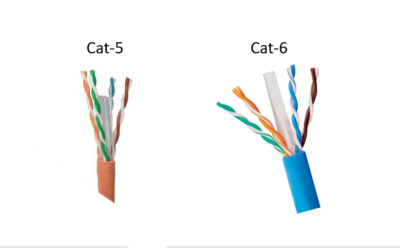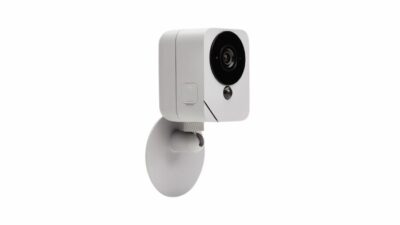Table of Contents
Introduction:
Embarking on an “In-Depth Look at Component Technologies” opens the door to a profound exploration. You’ll examine the integral components shaping the modern technological landscape. This article aims to dissect the nuances, significance, and practical implications of component technologies. It does so in the dynamic realm of system development.
Defining Component Technologies:
Before we delve into the intricacies, we must establish a clear definition of component technologies. At their essence, component technologies signify a revolutionary approach to system development. They embody the seamless integration of hardware and software elements. They offer a modular and scalable framework for constructing advanced systems. This framework is used across various industries.
The Modular Approach: A Pillar of Component Technologies:
At the heart of component technologies lies the principle of modularity. Systems are constructed as amalgamations of interchangeable, independent components. This section delves into how this modular approach facilitates faster development. It also makes maintenance easier and troubleshooting more efficient. Real-world examples show how industries use modularity to streamline processes. They also enhance operational efficiency.
Reusability as a Driving Force:
A critical facet of component technologies is the concept of reusability. Once developed, components can be repurposed across different projects. This reduces development time and costs. This part of the article explores how reusability fosters a sustainable and cost-effective approach to system development. Case studies exemplify instances where organizations optimize resource use. They do this through reusing components.
Scalability, Adaptability, and Interoperability: Core Principles Explored:
The article dives deeper. It navigates through the core principles that define component technologies’ functionality. Scalability, adaptability, and interoperability emerge as pivotal aspects. The discussion reveals how these principles contribute to the durability and adaptability of component technologies. They cater to the diverse needs of contemporary systems development.
Unearthing the Historical Evolution:
To grasp the essence of component technologies, it’s essential to trace their historical evolution. This section takes a journey back to the early days of computing. It explores the roots of modular design and component-based systems. Advancements in hardware and software engineering have driven the evolution of component technologies over the years. The changes show how far we’ve come. We’ve reached an era where integration is not possible, but indispensable.
Core Characteristics in Action:
The article builds upon the theoretical foundation. It provides practical insights into the effective application of core characteristics. These are modularity, reusability, scalability, adaptability, and interoperability. Real-world scenarios showcase how adherence to these principles results in cohesive, high-performing technological ecosystems. This happens across diverse industries.
Role in Enhancing Efficiency and Productivity:
This exploration considers component technologies to be a critical segment. They enhance efficiency and productivity. Breaking down complex systems into modular components allows for a streamlined development process. This modular approach facilitates faster implementation, easier maintenance, and efficient troubleshooting. Industries leverage these advantages to cut downtime and maximize operational efficiency.
Fostering Innovation and Development:
Component technologies are pivotal in advancing innovation in the ever-evolving technological landscape. This section explains how these technologies are modular. Their modularity encourages a collaborative and iterative development approach. Teams can focus on innovating individual components without disrupting the entire system. This fosters rapid experimentation and improvement.
Contribution to System Performance:
The undeniable contribution of component technologies to system performance is dissected in detail. Systems built on these technologies exhibit heightened performance levels. They optimize each component for specific tasks and functionalities. Targeted optimization ensures efficient resource use, reduced bottlenecks, and improved responsiveness. Component technologies are adaptable, so they can be fine-tuned to meet specific requirements. This contributes to a cohesive, high-performing technological ecosystem across diverse industries.
Different Types of Component Technologies:
This section categorizes component technologies into hardware components, software components, and integrated components. Each category is explored with real-world examples. The examples emphasize the role and significance of both hardware and software. They show how both are essential in modern systems.
Hardware Components: Foundational Elements Explored:
A comprehensive overview of hardware-based technologies is presented. This segment explores the tangible aspects that constitute the physical foundation of technology. It includes processors and memory modules. It also includes specialized components like Graphics Processing Units (GPUs). It also includes Programmable Logic Controllers (PLCs). Examples and applications showcase the diverse roles of these hardware components. They are found across various industries.
Software Components: The Intangible Drivers:
The article then shifts focus to software-based technologies. It highlights the intangible elements that drive system functionality. The course explores Operating Systems (OS), databases, and Artificial Intelligence (AI) algorithms. It also examines mobile apps. Examples illustrate their applications in daily life and industrial settings. The symbiotic relationship between hardware and software components is emphasized. This underscores the interconnected nature of modern technology.
Integrated Components: Fostering Synergy Between Hardware and Software:
Integrated technologies, the convergence of hardware and software components, take center stage. Examples, such as Integrated Circuits (ICs) in smart devices, Advanced Driver Help Systems (ADAS) in automotive systems, and Smart Home Systems, show how the synergy between hardware and software creates interconnected solutions. This enhances efficiency and precision across various applications.
Networking Components: Enabling Seamless Data Exchange:
An extra layer is added to the exploration with networking components. Routers, switches, and communication protocols help different technological entities communicate and exchange data. Examples and applications showcase how networking components enable the creation of networks. They connect devices and systems for seamless data transfer and communication.
Advantages and Disadvantages Revisited:
The article revisits the advantages and challenges of component technologies. It provides an in-depth analysis of each aspect. The advantages, such as modularity, reusability, scalability, efficiency, adaptability, and innovation, are explored. Real-world scenarios illustrate their practical applications. The challenges include compatibility issues, security concerns, integration complexities, and potential overhead. We dissect them to provide a balanced perspective.
Future Trends and Innovations: Peering into the Technological Horizon:
As the article looks towards the future, emerging trends and innovations take the spotlight. Edge computing, quantum computing, and advanced AI are identified as key emerging technologies. They shape the trajectory of component technologies. By integrating cutting-edge technologies with traditional component architectures, we can unlock new levels of performance. It will also boost efficiency and functionality.
Predictions for Evolution: Intelligent and Autonomous Systems:
The evolution of component technologies is predicted to be dynamic and transformative. We foresee a shift towards more intelligent and autonomous systems. These systems will have components capable of adaptive learning and real-time decision-making. The exploration extends to nanotechnology. It envisions the development of smaller yet more powerful components. Increased standardization is expected, fostering interoperability among components from different manufacturers.
Potential Impact on Industries and Society:
Component technologies will affect industries and society. Component technologies’ future has profound implications for industries and society. Increased automation and efficiency are anticipated, driven by the integration of intelligent components. Revolutionary changes are envisioned in sectors like healthcare, manufacturing, and transportation. They aim to create smarter, more responsive systems. Experts predict that component technologies will become more common and accessible. This will improve connectivity. Resource management will get better, and technology will become more accessible to everyone.
Navigating Future Trends: A Call to Stay Updated:
The article emphasizes the need for a keen awareness of the evolving technological landscape. This awareness is necessary to navigate future trends and innovations in component technologies. A commitment to staying updated on emerging developments is identified as crucial. Industries and societies worldwide are on the brink of a technological revolution. It promises to reshape the way we live, work, and interact with the world.










Comments on " In-Depth Look at Component Technologies: Unraveling the Core of Modern System Development" :